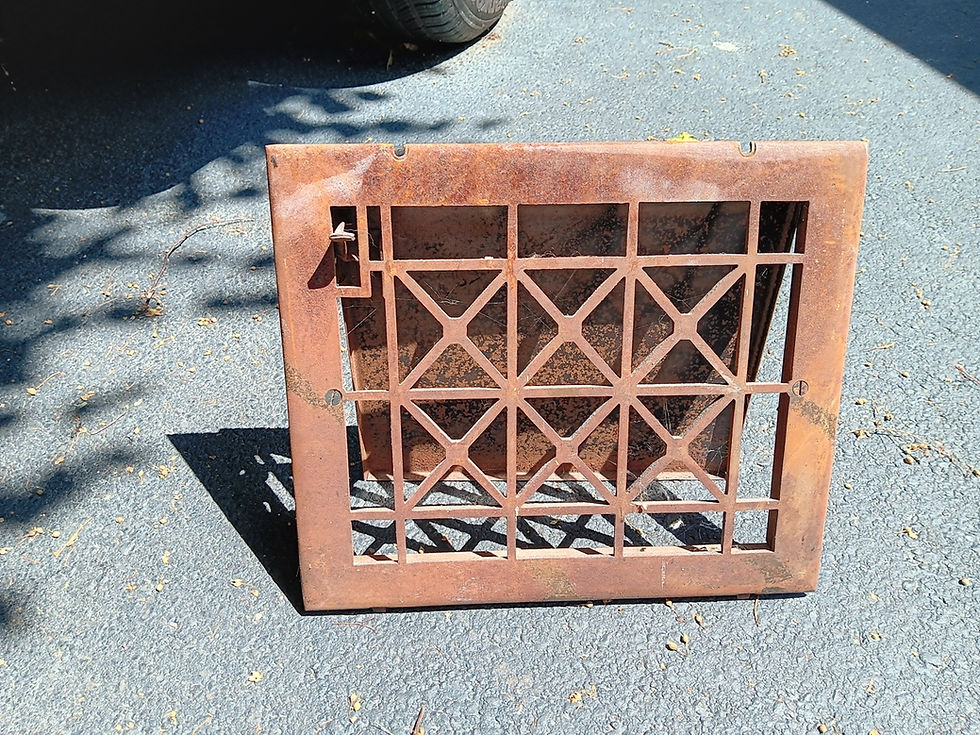Ideas from Ed: Power to the people FOLLOWUP
- edwardpetrus

- Nov 29, 2020
- 4 min read
Updated: Dec 1, 2020
(Volume 3, Issue 12)
Ed is a do-it-yourselfer who is happy to share some of his ideas and experiences in this monthly column.
A while back, I wrote an article entitled “Power to the People!” and it has generated a lot of questions. (Please see https://www.lcppreserve.org/post/ideas-from-ed-power-to-the-people. This article will build upon, but not repeat, much of that information.) The old article talked about replacing an old-house 2-prong electrical outlet with a ground fault interrupter (GFI, or GFCI) for safety and upgrading. What I didn’t mention at that time is that a GFI has a “line” side and a “load” side. The line side is what feeds power to that particular location. The old outlet might have a feed with electricity coming “in” and a “pass-through” (because the side screws are connected) supplying power to other locations downstream. If you’re just replacing a single old outlet with just a supply of electricity to it with a GFI, you’re done, with ground-fault protection at that location. HOWEVER, anything connected to the load side of a GFI is powered through it, and is also ground-fault protected.
In a nutshell, this means that if you have, for example, 6 old outlets on circuit 13, you don’t need to (and shouldn’t) replace all 6 with GFIs. The ideal scenario would be to simply connect the GFI at the location closest to the circuit breaker box, and connect the remaining 5 outlets through the “load” side, effectively protecting all 6. Then you could replace the five 2-prong outlets with modern 3-prong outlets, which was probably your intention in the first place. Here’s a picture of a tamper-resistant 20A GFI. You can tell it’s a 20A because of the “sideways T” prong. Obviously, if you’re working on a 20A circuit, you should use a 20A GFI.

OK, so you probably knew all that already. The trick really is to find which outlet is “first” in line to receive power from the breaker panel. I said “closest to the circuit breaker box” in the above paragraph, but I mean that electrically-speaking, not necessarily geographically. However, it’s usually true that the outlet with a physical location closest to the panel is also electrically closest. But how do you know?
Serious electricians have toolboxes full of electrical testing equipment. Usually, it’s expensive equipment. You can search places like YouTube and see how this is done professionally, measuring current drop from one location to another. I like to think “outside of the box” and figure out ways of doing things myself, and save a few bucks along the way. I’m guessing you do, too, or you wouldn’t be reading this article!
I have an unfinished basement, which makes access to things like wiring pretty easy. When I built a toolbench in a corner near the breaker panel, I needed a convenient place in which to plug an overhead shop light. I attached a new outlet box to the overhead joist, and interrupted the power feed to a circuit coming directly from the breaker panel. Then I installed a GFI at that location, effectively making it the first outlet, or the outlet most upstream from the rest. Running power through that GFI then protects the others, and no fancy equipment was needed. Here’s a picture of my installation:

Sharp-eyed viewers might notice a couple of things. This particular installation is on modern wiring, which already has the needed ground. Technically, then, the GFI isn’t needed as badly there as with older 2-conductor (and no ground) wiring. Unfortunately for me, there are sections of this circuit which haven’t been upgraded yet and are still 2-wire. Plus, I like the added safety the GFI provides, in addition to giving me an extra outlet. Since this is in a basement, where function is more important than appearance, I labeled the wires and the circuit with a marker for easy identification in the future. Some might ask why I just didn’t replace the circuit breaker itself with a “GFI breaker” which would protect the whole circuit. It’s because my panel is the old style “push-matic” and GFI breakers are not made for it!
This has worked out to be so easy (in an unfinished basement scenario) that I’ve done it 3 more times, giving me 4 complete circuits protected through new GFIs. This picture shows another one, which really does need to be a GFI due to its location near the laundry tub:

There is one more step you should do to be in compliance with code, especially if you’ve replaced the downstream 2-prong outlets with 3-prong ones. You should attach stickers to each outlet saying “GFCI PROTECTED OUTLET” and “NO EQUIPMENT GROUND” so that (although protected) no one will be fooled into thinking it’s a proper, new, and grounded outlet. Those stickers usually come in abundance, packaged with the GFI.
I hope all your projects go well. Thanks for reading, and happy restoring!
Ed
PS: If you want to save or print this, click below to download a copy of the above as a pdf file.




Comments